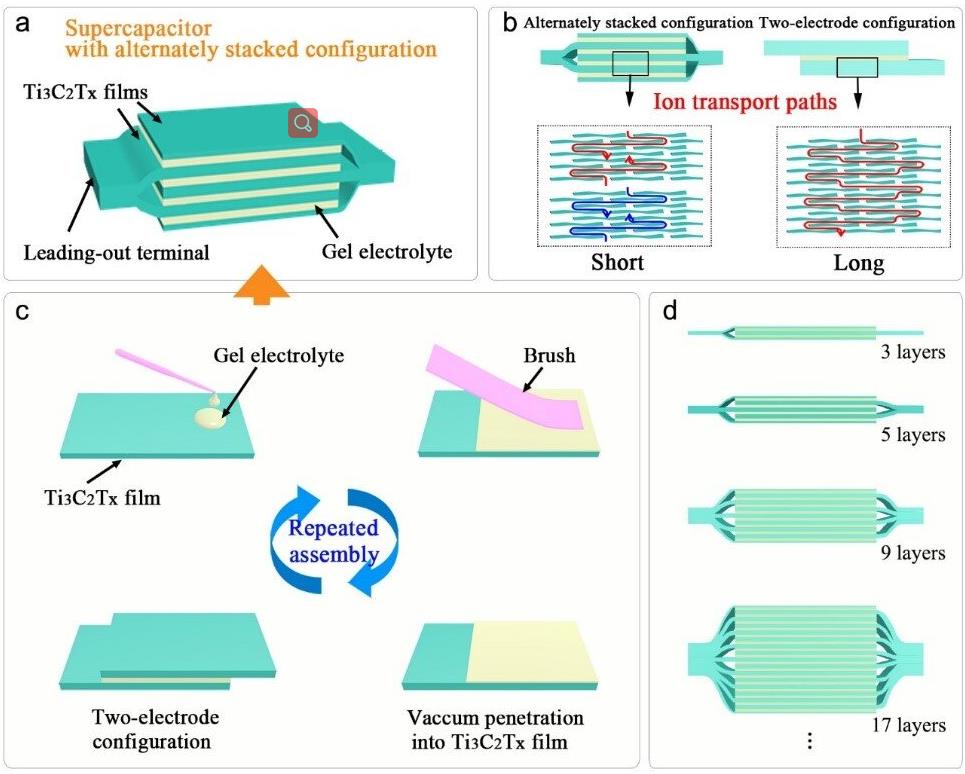A new design with an alternately stacked electrode configuration helped to enhance the volumetric performance of supercapacitors and attain high energy density without sacrificing power performance.
This research, which introduced the alternately stacked electrode structure into a compact energy storage system for the first time, was conducted by Prof. Han Fangming from the Institute of Solid State Physics, Hefei Institutes of Physical Science and Prof. WEI Bingqing from the University of Delaware, Newark, U.S..

In this work, the researchers designed an alternate multilayer stacked film electrode structure using Ti3C2Tx (MXene) films as the electrodes, and gel electrolyte as the separator.
This new structure could shorten the transport distance of ions under high mass loadings, and increase the mass loading of active material at the device scale, without increasing the mass loadings of every single electrode.
Thus, the supercapacitor with the alternately stacked configuration showed ultrahigh areal capacitance of 10.8 F cm-2, a high volumetric energy density of 10.4 mWh cm-3 at 75.0 mW cm-3, and simultaneously maintained high power performance
"It has the highest values in an aqueous gel electrolyte system compared to the literature," said Prof. Han.
With the trend of miniaturization and portability of electronic devices, it is essential to improve the volumetric energy density of electrochemical energy storage devices. High mass loadings can decrease the inactive component ratio at the device level, thereby leading to increased energy density as well as decreased cost.
Unfortunately, the increase of the mass loadings usually comes at the cost of losses in specific capacitance and power density.
This new design could offer a new approach to achieve advanced high areal and volumetric energy density in electrochemical energy storage devices with high mass loadings of active materials.


